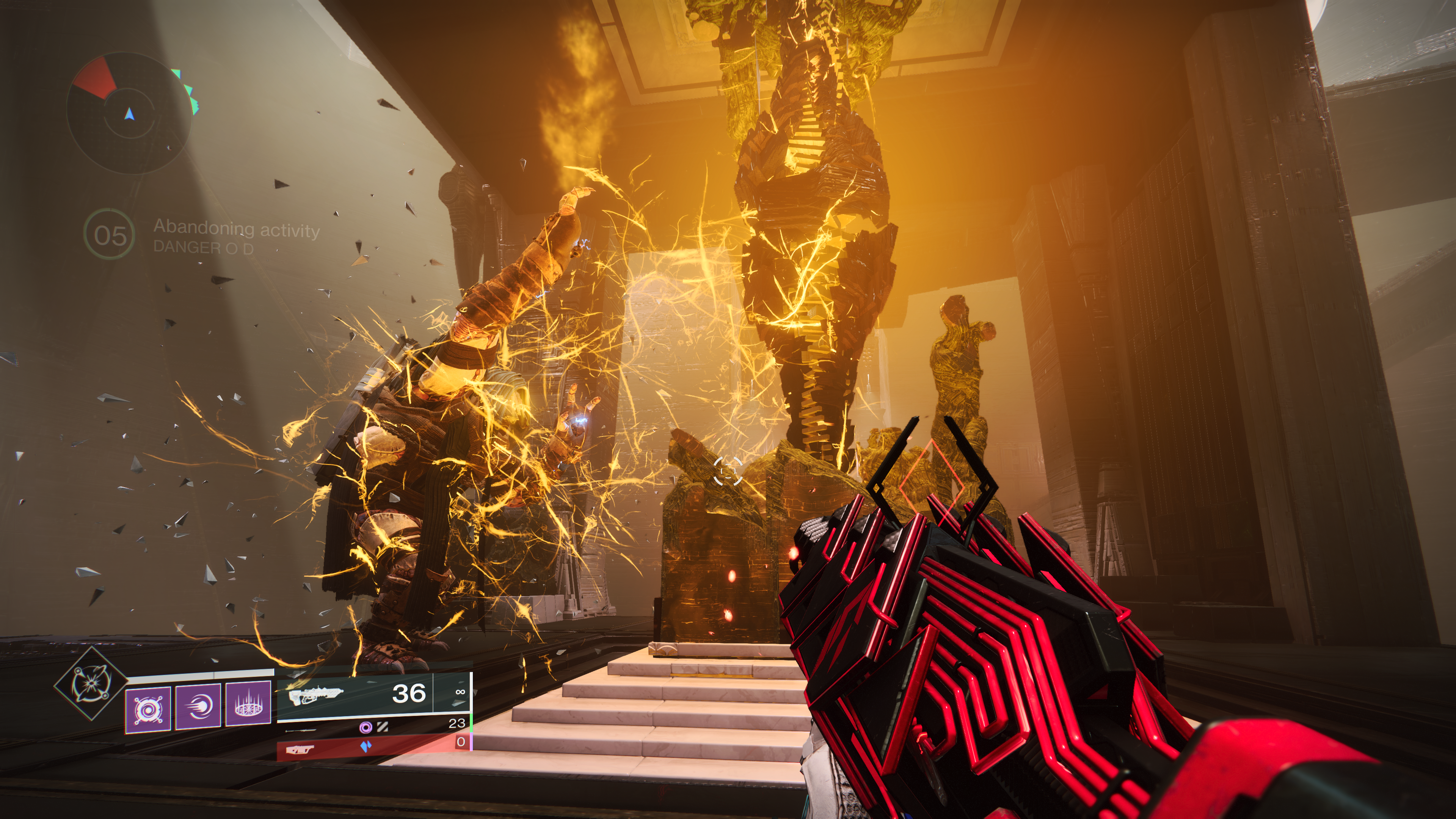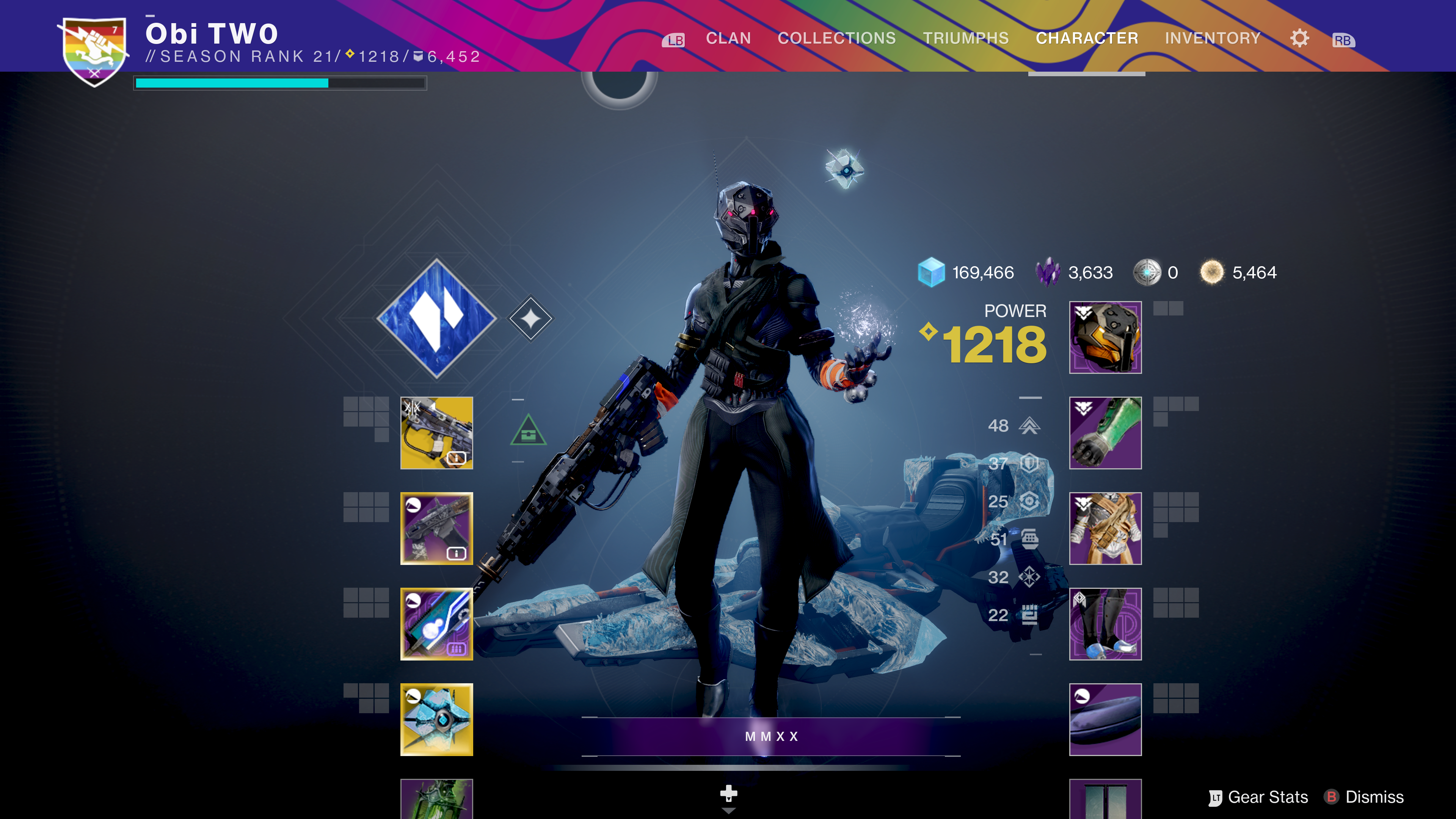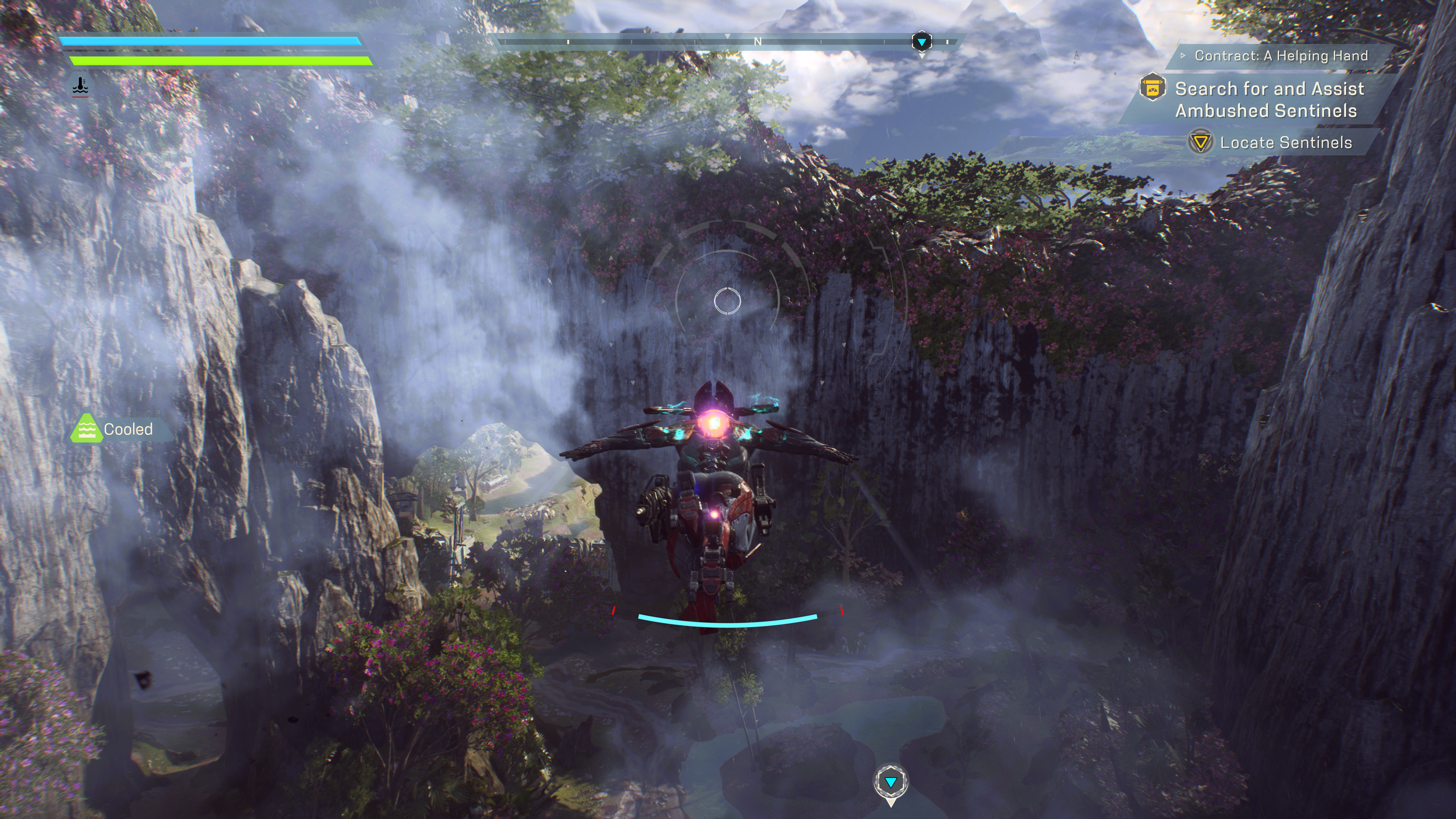So much for the “Destiny-killers”

“Dead game”. Thus goes the response (usually in more colourful language) on almost every social media post by the official account of Destiny 2. However, Destiny 2 regularly appears in the gameplay charts on Xbox, Playstation, and Steam, proving it has healthy engagement from fans, even four and a half years on from release.
Reception of the recent major content expansion, The Witch Queen, has been stellar, with widespread praise of the storytelling (long a criticism of Destiny) and the new gameplay content. Bungie, an independent development studio (although recently acquired by Sony), are moving into other media, opening new offices, and showing no signs of slowing down. So how did we get here? And why has no other publisher managed to topple Destiny 2 in the live service, MMO-lite genre?
Legacy
I think everybody knows all about Bungie’s legacy. After a few fondly remembered titles such as Marathon and Myth, Halo: Combat Evolved became THE killer app for the new Xbox console. While there had been plenty of FPS games on console before Halo: CE, none managed to “get” the movement and look controls quite as expertly as Bungie. Sure, purists will always take M+K over controllers, but Bungie’s control scheme in Halo: CE showed that it was entirely possible to translate M+K to the twin analogue sticks of modern games consoles. Halo: CE gameplay was so buttery smooth that it arguably set the blueprint for console FPS that is still used today. It only takes a few minutes with Destiny 2 to feel its DNA. It is undoubtedly Bungie.
Video games should, above all, be fun and feel good to play. When it comes to FPS there are few studios who can rival Bungie’s finely tuned gameplay.
New ground
When Destiny was announced back in 2013 it was immediately clear Bungie were aiming high with their new IP, with plans for an ever-evolving title like World of Warcraft. Sadly the game that arrived in September 2014 was lacking in storyline and content, and a lot of people turning up expecting a traditional single player campaign were sorely disappointed. Yet there was something magical about it. The core gameplay was superb (as should be expected from Bungie) and the post-apocalyptic future sci-fi setting was compelling. Digging into the game’s lore via collectible cards unlocked by certain in-game actions spoke to a depth and detail that didn’t come across in the main “campaign”. It was clear there was the basis of something here, even if the execution was off. It would become clear later that Destiny’s development was beset by all manner of problems. These were excellently documented by Jason Schreier in his wonderful 2017 book Blood, Sweat, and Pixels, which is an incredible and at times disturbing expose of the video game industry.
A year later, Bungie bounced back with The Taken King, still widely considered to be the best Destiny has ever been. A massive revamp of core gameplay activities alongside new locations and an actual storyline, The Taken King reinvigorated the game and received critical acclaim. A content drought would eventually follow again though, with players having to wait until the following year’s Rise of Iron expansion, itself well received, for significant updates. A lot of players (myself included) would dive into the new content when it released, play for a while, and then inevitably drift away from Destiny only to come back later with the next major release.
As early as 2014, Activition was talking about a sequel and biennial releases. Unsurprising perhaps, considering this was the publisher who has consistently rinsed its licenses for everything it can get (Call of Duty’s struggles as well debated), but it seemed to fly against the core idea of an ever-evolving title which Bungie was talking about back in 2013.
Repeating mistakes
In 2017, Destiny 2 appeared as a full sequel. It certainly seems that this was something driven by Activision, rather than Bungie, and it launched with many of the same issues as its predecessor. While the core gameplay was as smooth and enjoyable as always and it now had a proper campaign with cutscenes and a story and everything, it was lacking in variety and seemed to undo much of the good progress that had been made with The Taken King and Rise of Iron. There were only four destinations and little variety in the activities. Much like D1, the first two expansions were lightweight and provided only a little distraction. It seemed Destiny 2 had been released too soon.

One thing Destiny 2 has always nailed, is the feel of the core gameplay. It's as smooth and enjoyable in the latest raid as it was back at launch.
Much like the first game, Destiny 2 then received an expansion that re-invigorated the game, added loads of new content, and crafted a masterful storyline resulting in the death of one of the game’s most beloved characters, Hunter Vanguard, Cayde-6. Much like The Taken King breathed new life into Destiny, Forsaken did the same with the sequel. Bungie worked with support from several of Activision’s studios to deliver Forsaken, and it certainly paid off as Forsaken appeared to course-correct Destiny 2.
It came as something of a shock then when in January 2019, Bungie announced they were ending their publishing partnership with Activision and would be self-publishing Destiny going forward.
Independence
The newly solo Bungie was quick to move away from the annual content schedule towards a more seasonal model. It’s not unreasonable to suggest Activision were pushing for Destiny 3 while Bungie wanted to focus on building Destiny 2 as the continually evolving game they’d original conceived. Rather than announcing the sequel everyone anticipated, the next major reveal showcasing the Shadowkeep expansion laid out a roadmap of several years’ worth of content and a move for the base game to a Free to Play (F2P) model. And even a couple of years on, we’re still only part of the way through the announced roadmap, with Lightfall and The Final Shape still to come.
When COVID hit and almost the whole world adapted to working from home (where possible), businesses went under, and people were stuck at home, it would be understandable to expect an independent, self-publishing game studio to fall upon hard times and struggle to deliver. As they have so often done, however, Bungie adapted. They were quick to embrace home-working for their staff, they delayed the upcoming Beyond Light expansion (quite rightly) to accommodate for the upheaval and disruption to their business, and they delivered not only an excellent expansion with a phenomenal new raid (quite possibly my favourite in D2), but next-gen upgrades to align with the new Xbox Series and PS5 consoles, cross-save, and various other quality of life improvements. Rather than fall upon hard times, Bungie seemed to thrive under the pressure, becoming more decisive, more assertive, and fully trusting in their team to deliver.
Interestingly, Bungie’s new swagger didn’t stop with Destiny. The last couple of years have been a time of crisis, as society seems to lurch from one scandal to the next. From George Floyd’s murder to the culture of toxicity and misogyny surrounding Activision Blizzard and many other players in gaming, Bungie have used their platform to speak out on human rights issues, pledging support for minorities and movements from LGBTQ+ communities, to Black Lives Matter and women’s rights. While like any employer, I’m sure Bungie will have their share of issues within the company, they appear to be a business keen to actively tackle inequality and spread awareness using their voice.

As well as being outspoken on various social issues, Bungie have made exclusive emblems and store items for sale, with proceeds going to support charities, such as the Pride emblem shown on my guardian here.
There was definitely some concern then, when Bungie and Sony announced they would team up in a publishing deal, not least among Xbox gamers, that we might lose some of this new found self-confidence and independence. While the full scale of this partnership remains to be seen, it does seem that this is more about Sony helping Bungie move Destiny and other IPs into other media (Sony of course have huge reach in film and TV), and Bungie helping Sony with some of their hard-won expertise in live-service gaming and supporting technology (networking, etc).
For now at least, there is no sign of Bungie becoming any less outspoken, or any less independent in the direction of Destiny.
Contenders
So why does Destiny continue to succeed where so many others have tried and failed? Destiny certainly isn’t the only game that’s succeeded as an evolving service, there are World of Warcraft, Fortnite, GTA Online, to name a few. But each of these titles has key differences to Destiny. The list of games which are most comparable to Destiny and have often been tipped as “Destiny-killers” (looter-shooter, live service model, RPG elements) reads like a laundry list of disappointments:
- Tom Clancy’s The Division (1 & 2)
- Marvel’s The Avengers
- Anthem
- Outriders
All have promised much, but if you read a review of each I can almost guarantee you will see the words “failed to live up to the hype” or something similar. So why has Destiny been able to succeed where these titles have failed (or at the very least, not delivered as anticipated)?
I’m sure there have been major investigations carried out at all the big publishers as to why they haven’t been able to ape Destiny’s success and longevity, but I wonder if that is part of the problem. Major publishers are beholden to the shareholders, who want stable, predictable numbers, a nice release calendar with the right IP at the right time to meet forecasts. Video games, while big business, are an art form. And art of any form is unpredictable. Jason Schreier expertly captured in Blood, Sweat, and Pixels that making video games is a huge investment, often one which takes months of effort before you even know if you have something fun to play. It’s too much of a risk for some. Bungie, by going independent, are free from the constraints of Activision Blizzard’s shareholders, and have enough faith from their financiers to keep investing in Destiny 2. Often, progress requires calculated risk, and with their independence, Bungie have had more flexibility to take risks than would be palatable by your typical big publishers.

Anthem had promise but was ultimately killed by EA before Bioware could make good on it.
Anthem may have got there with Anthem 2.0 if EA hadn’t pulled the plug. There’s good core gameplay and world-building there, but EA seem to be putting all their Bioware-flavoured eggs back into Mass Effect and Dragon Age. The Division 2 is still supported by Ubisoft, but doesn’t seem to have the same level of continued investment as Destiny. Does having big publishers behind these titles actually hurt their chances of longevity? Destiny 2 is only where it is today because Bungie rode out the bad times and continued to believe in their game, setting out a vision of what they wanted and building towards it with their community.
To make a live service game successful, you need to play the long game. This is something Bungie have embraced. There are others out there, Warframe is a name that springs to mind, but when you look at the big mega publishers (such as EA, Ubisoft, Activision), there seems to be a lack of understanding of the level of commitment needed to pull off a successful long-term live service game. Of the major publishers there are only a handful of titles that have successfully delivered on this model, and none of them are a similar type of title to Destiny 2. GTA Online (Take Two), Sea of Thieves (Microsoft), and Fortnite (Epic) have all nailed the live service model but all deliver fundamentally different experiences to Destiny and none would really be considered a direct competitor.
The Future
I was surprised a few weeks prior to the launch of The Witch Queen when Sony announced they had acquired Bungie in a $3.6b deal. While a little concerned at first for the future of Destiny on Xbox, it soon became clear for Bungie the deal was about bringing Destiny to other media via Sony’s global reach in entertainment, while for Sony they were acquiring a studio who has “been there and done that” when it comes to the Games-as-a-Service model, something Sony appear to be struggling with. It’s an interesting move, but one that would seem to secure the future of Destiny for many years to come.
Despite the difficulties of the pandemic, Bungie seem to have found their stride with Destiny 2 and come out the other side with the bit between their teeth. The Witch Queen was incredibly well received, with the campaign, storytelling, and changes to key gameplay elements being widely praised, but there’s still a lot of work to be done on the game, it’s certainly not perfect - Gambit has become a bit of an afterthought, PvP balancing is all over the place, and seasonal and event content can be a bit too formulaic.

With the Witch Queen, Bungie completely overhauled the Void subclass, bringing it in line with the system used for Stasis in Beyond Light.
With Destiny, the way some people play games has massively changed. For some, Destiny has become the only game they play, something they log into for hours every single day. Some of these players are famously ravenous, sinking hundreds of hours into the new content within weeks of its release, and it’s always these people who are first to complain about the lack of content. Indeed, there’s a dark side to obsession. By dedicating so much time and effort on a single game, there’s a proportion of the Destiny community who have become increasingly vocal and displeased with the game. This has spilled over into outright hostility on a number of occasions, with Bungie forcibly defending their staff and their IP via strong public statements and legal action. At times there’s a sense of frustration eminating from Bungie. Their communications with their players are head and shoulders above any other developer out there, yet there still seems to be a sense of entitlement and frustration from some quarters of the community. I wonder whether this is a case of the constant grind turning what should be fun (it is a video game after all) into an obligation for some? There’s definitely a need for some to take a step away from Destiny (maybe from gaming overall) and take a break. Hopefully this vein of negativity doesn’t discourage Bungie from continuing to engage with the community and share as much information as they currently do.
However, for the average player there’s plenty to keep entertained. The key word for Destiny 2 is “evolution”. Bungie are listening to player feedback (as long as it’s constructive), constantly balancing the game and tweaking how they deliver content, and it’s a real “Game-as-a-Service” vibe, something that many competitors have tried, and failed, to capture. There’s certainly no sign of the Destiny IP slowing down any time soon.
Per Audacia ad Astra.